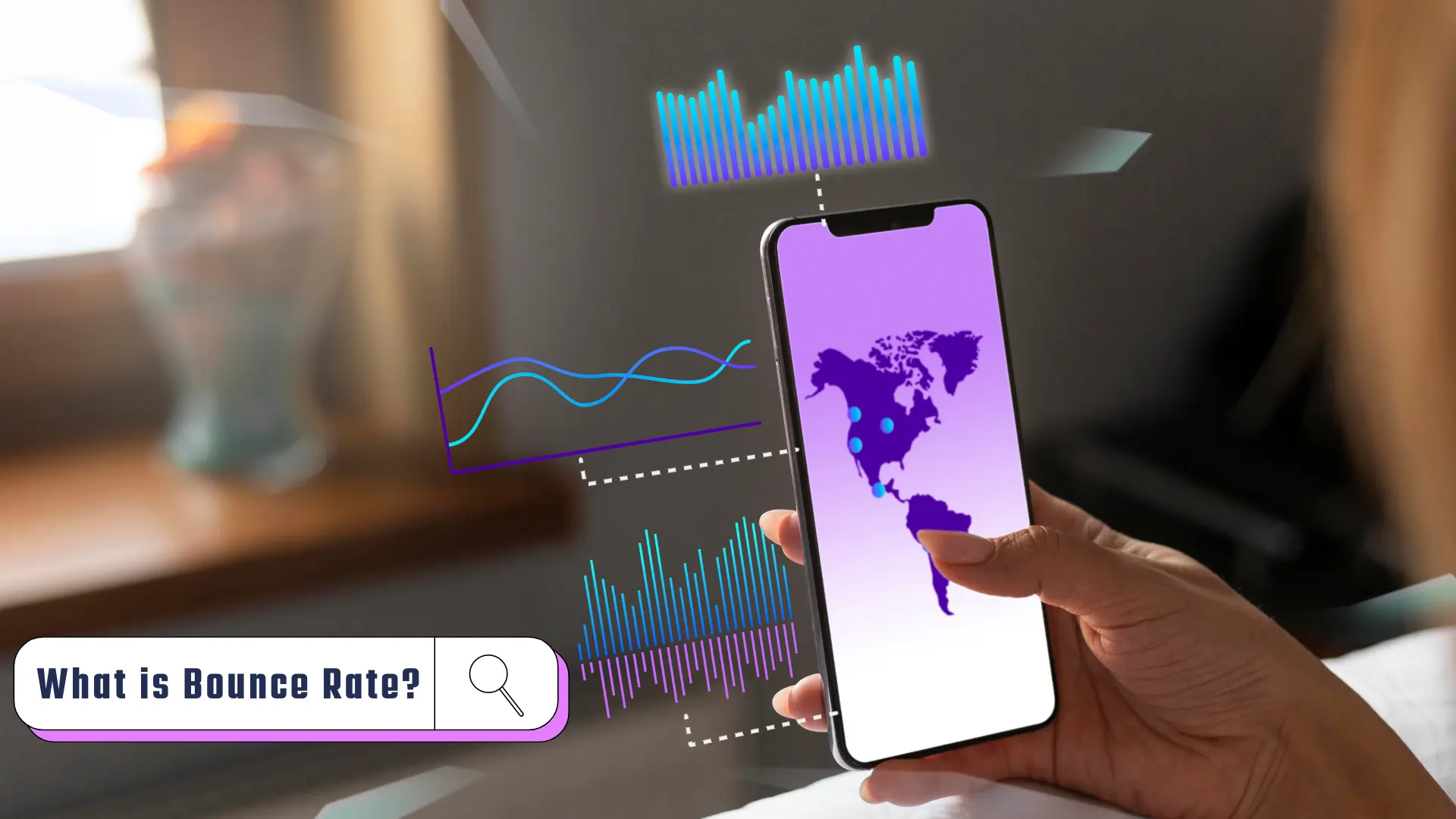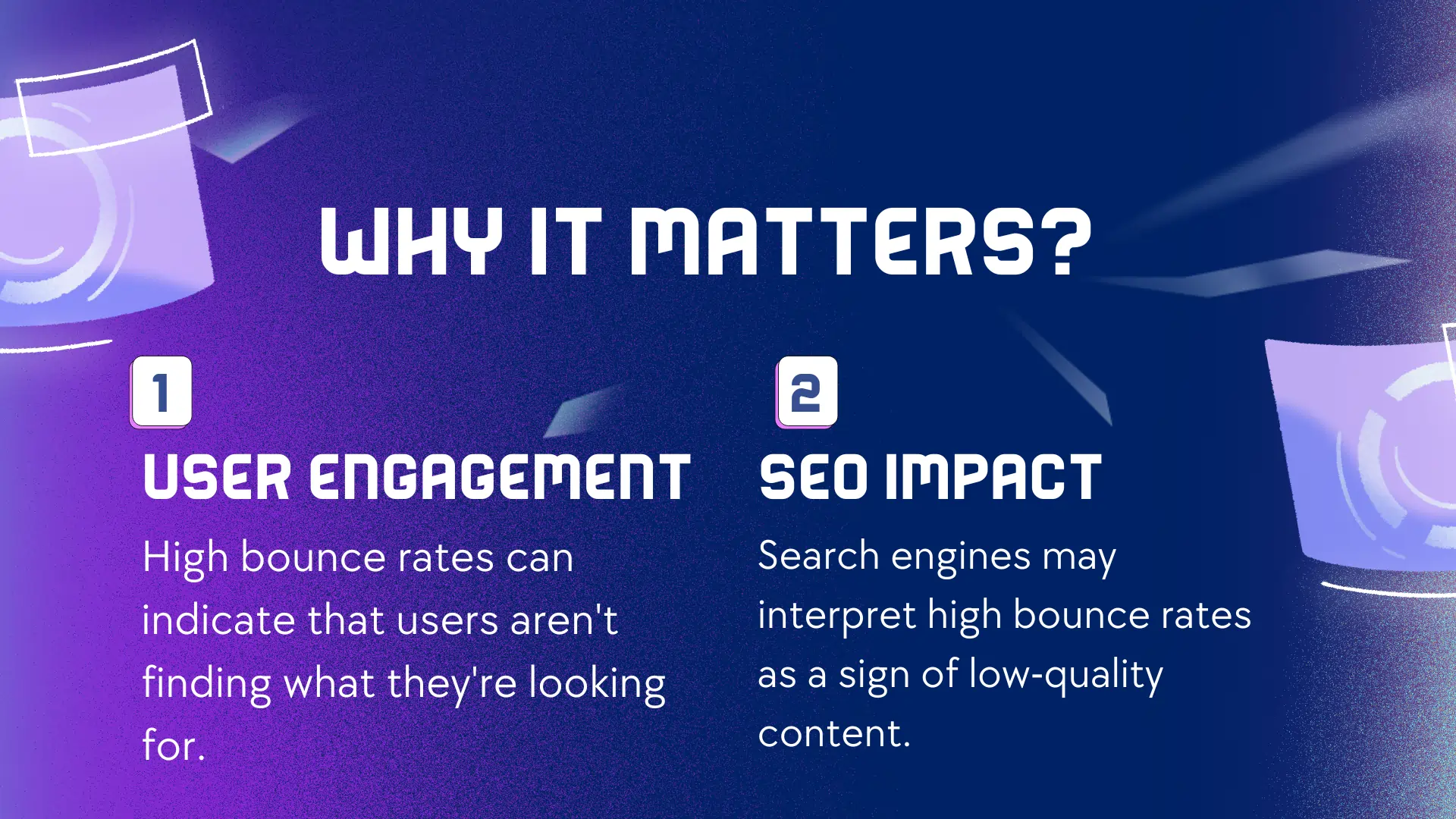What is Bounce Rate?

What is Bounce Rate?
Bounce rates are measured in web analytics. It is the percentage of visitors who enter a website and then leave, rather than staying and interacting with it in a meaningful way.
People utilize these rates to measure the success and page effectiveness of a website. It is known that a high bouncing rate is harmful and a low bounce rate is healthy for a webpage. A high bounce rate on a customer service page could suggest that the user discovered a solution to their problem and left happy. A high bounce rate on a landing page with a lot of paid acquisition may indicate that you may improve your page though.
let’s delve deep into the topic and clearly understand what it is and what it’s effects and how it can help maximize you page rankings.
Google Definition of Bounce Rate
A bounce is a single-page session on your site. In Analytics, a bounce is calculated specifically as a session that triggers only a single request to the Analytics server, such as when a user opens a single page on your site and then exits without triggering any other requests to the Analytics server during that session.
Bounce rate is single-page sessions divided by all sessions or the percentage of all sessions on your site in which users viewed only a single page and triggered only a single request to the Analytics server.
These single-page sessions have a session duration of 0 seconds since there are no subsequent hits after the first one that would let Analytics calculate the length of the session.

How to Calculate Bounce Rate
To determine this rate, divide the total number of one-page visits by the entire number of website entries. For example, if your home page obtains 1000 visits this month but 500 leave without clicking on a second page, your homepage’s bounce rate will be 50%.
There is no need to calculate like this because Google Analytics 4 does it for you.
Thanks for this Google!
Keeping Eye Is Helpful
Keeping track of the bounce rate is critical in today’s world of fierce digital competition, particularly for businesses. Monitoring this measure allows you to detect pages that aren’t engaging, attracting, or retaining visitors. Furthermore, this measure might reveal several on-page difficulties that you may have, such as:
- Poor page layout
- Bad User Experience
- Issues include poor copywriting
- Irrelevant Content
By identifying inefficient pages and other difficulties, you may create a report that provides actionable insights into website optimization to improve its performance. This presents a chance for organizations to engage their prospects in more meaningful ways, thereby increasing conversions, revenues, and retention.
Impact of Traffic Sources on Bounce Rate
Users’ intents and levels of interest vary based on the channel they choose to reach your website, therefore traffic source has an impact on performance.
like email has the lowest rate when compared to other sources since visitors who arrive via email have a more targeted interest in the material you give because they have previously registered to your newsletter.
On the other hand, the percentage of visitors who arrive via display advertisements and bounce is higher because not all people reached through ads are ready to buy. Some of them may be in the early phases of investigation or find your information irrelevant to their needs.
Thanks For Reading: What is Bounce Rate?
Partner With Naumaan Oman
Recent Posts
Working Together Ideas come to life
No matter how big your company is, as you expand and reach new highs you’ll want an agency to have your back. One with a process
360presence@gmail.com

© 2023 360PRESENCE All rights Reserved
















